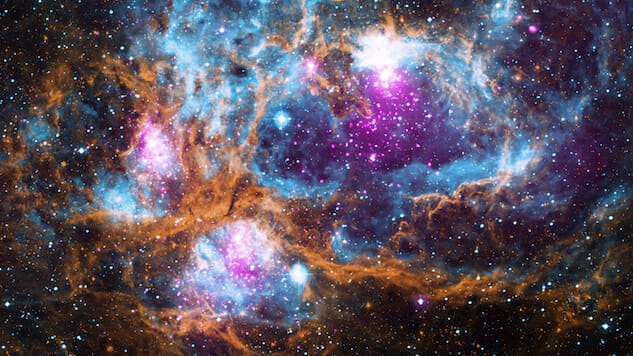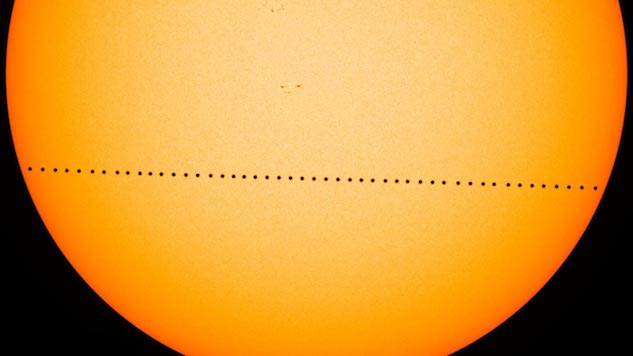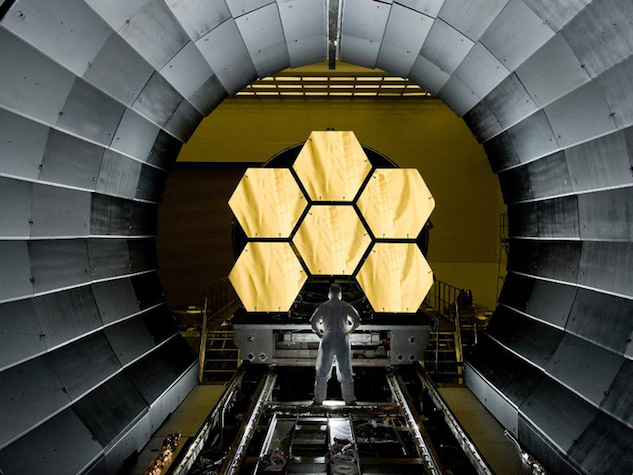
Space Matter is a weekly column that delves into space science and the mechanics of spaceflight. From the latest discoveries in the universe around us to the fits and starts of rocket test flights, you’ll find analysis, discussion and an eternal optimism about space and launching ourselves into the cosmos.
![]()
Last week, NASA announced that scientists have discovered seven Earth-sized planets in a system that’s about 40 light years away, orbiting a star called TRAPPIST-1. We know that six of them are probably rocky, while one is gaseous. We know they all have the potential to hold liquid water, but judging from their distance to the star, it’s most likely on just three of them. We know their orbits are very close to their super-dim star.
These planets, and in fact all exoplanets (or planets outside our solar system), are too small to be directly observed. We can’t really see them to make visual observations. They’re too far away to send a spacecraft. Yet we know a lot about these planets. How do we know so much about planets we can’t see?
First, let’s quickly review how scientists actually find exoplanets. One method we use, and how the TRAPPIST-1 planets were discovered, is called the transit method. When something crosses in front of a star, as we see it from Earth, the light output of the star changes. We can measure these dips in light, and their frequency, to find a planet. If they happen at a regular frequency, we know there’s likely a planet (or multiple planets) orbiting that star.
 Mercury transits the sun in this composite image. Photo courtesy of NASA
Mercury transits the sun in this composite image. Photo courtesy of NASA
Another method of discovering a planet is radial velocity. It’s clear that stars affect the planets in their solar system—but planets affect stars too. A planet will act on a star gravitationally and cause it to shift position slightly. Of course, the star has a much greater gravitational field (hence why planets orbit stars, and not the other way around), but a planet will cause a star to “wobble,” which we can measure. The larger the planet, the greater the wobble of the star.
The radial velocity method also can tell us a planet’s mass. Quite simply, the larger the star’s wobble (the gravitational effects of the planet on the star), the greater the mass of the planet. As you may be able to infer, there’s a reason the bulk of the planets we’ve discovered are Jupiter-sized and larger—they may or may not be more common, but they certainly are easier to find.
But how do we know what a planet is made of? How can we tell whether it might have an atmosphere, or whether it’s rocky or gaseous? For that, we must turn to spectroscopy. Astronomers can analyze the light we see that reflects off a planet or passes through its atmosphere. Every element gives off a distinct wavelength, so by analyzing the light, scientists can tell what elements are within the planet.
“How can you even find the light reflecting from a planet, though? You just said they’re too small to see,” you might ask, and you’d be right. We’re still developing tools sensitive enough to make these calculations, but scientists have become creative in how they extract this light. One popular method is to wait until the planet transits the star and measure that light; scientists are able to filter out the spectroscopy readings coming from the star directly. What’s left must be due to whatever elements compose the planet and its atmosphere.
So, then, how do we know whether planets are in the habitable zone of a star, an area that is warm enough to allow liquid water to exist on the surface, but not so hot that the water has boiled off? We can thank radial velocity and simple mathematics for this as well. How often does the planet act gravitationally on its star? That’s the orbital period, or the time it takes to orbit the star. The shorter the orbital period, the closer the planet is to the star.
Being in the habitable zone doesn’t mean a planet is habitable, though. It’s just the first step. The size and the mass of a planet are also important. We’re looking specifically for Earth-sized planets. Larger planets tend to be gas giants, while smaller plants may not have enough mass to sustain an atmosphere.
TESS, or the Transiting Exoplanet Survey Satellite, is being launched by NASA in March of 2018, and it’s designed specifically to look for exoplanets from space. TESS will use the transit method on over 200,000 stars to detect exoplanets. Once the satellite detects an exoplanet, scientists can use other telescopes (such as the Hubble’s eventual replacement, the James Webb Space Telescope) to study them in detail.
 The primary mirror of the James Webb Space Telescope. Photo courtesy of NASA/MSFC/David Higginbotham
The primary mirror of the James Webb Space Telescope. Photo courtesy of NASA/MSFC/David Higginbotham
With the new tools we’re developing, we should be able to discover more and more about the position and composition of exoplanets. Finding liquid water would be the ultimate achievement, but it’s difficult: Water isn’t present high enough in Earth’s atmosphere to be able to easily detected through spectroscopy. That doesn’t mean we won’t find liquid water on other planets, just that there’s a long road ahead before we truly find a habitable exoplanet.
Top photo: Courtesy of X-ray: NASA/CXC/PSU/L. Townsley et al; Optical: UKIRT; Infrared: NASA/JPL-Caltech
Lead image: Courtesy of NASA
Swapna Krishna is a freelance writer, editor, and giant space/sci-fi geek.